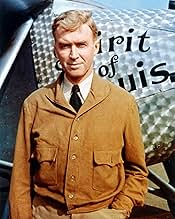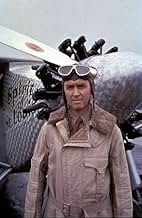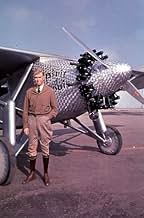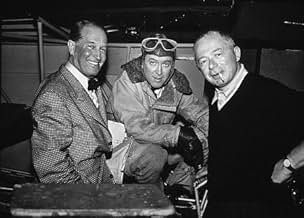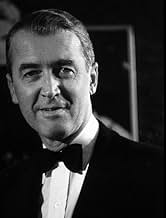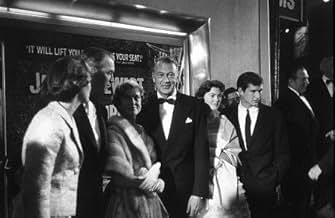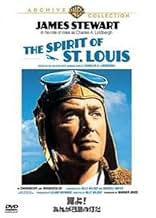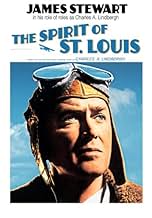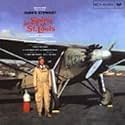अपनी भाषा में प्लॉट जोड़ेंCharles 'Slim' Lindbergh struggles to finance and design an airplane that will make his New York to Paris flight the first solo transatlantic crossing.Charles 'Slim' Lindbergh struggles to finance and design an airplane that will make his New York to Paris flight the first solo transatlantic crossing.Charles 'Slim' Lindbergh struggles to finance and design an airplane that will make his New York to Paris flight the first solo transatlantic crossing.
- 1 ऑस्कर के लिए नामांकित
- 2 जीत और कुल 1 नामांकन
- Burt
- (बिना क्रेडिट के)
- Mother from Oklahoma
- (बिना क्रेडिट के)
- Clerk
- (बिना क्रेडिट के)
- Crowd Member in France
- (बिना क्रेडिट के)
- Crowd Member in France
- (बिना क्रेडिट के)
- Reporter
- (बिना क्रेडिट के)
- Dad - Farmer
- (बिना क्रेडिट के)
- Farm Boy
- (बिना क्रेडिट के)
- Train Passenger
- (बिना क्रेडिट के)
- Blythe
- (बिना क्रेडिट के)
- Crowd Member in France
- (बिना क्रेडिट के)
फ़ीचर्ड समीक्षाएं
The central problem for the film makers is the 30 hour flight, there simply wasn't enough material to depict this, the most famous episode of the whole story & the whole reason behind the legend. The use of the flashback here is entirely reasonable & to be expected as a result.
What does annoy me is the fact that he wasn't the first to fly non stop across the Atlantic. He WAS the first to fly SOLO & the first to fly non stop to Paris, but he just wasn't first to fly across the Atlantic non stop. Alcock & Brown flew across, non stop, in 1919, some 8 years before Lindnergh. Don't forget 8 years may not seem much but consider that in 8 years we went from the Mk1 Spitfire to the almost supersonic Sabre jet! Also the Vivkers Vimy bomber Alcock & Brown used was World War 1 surplus equipment, running on gasoline that had more in common with used dishwater. Yet this achievement is side stepped by Hollywood & simply ignored, yet if it was Lindbergh who'd crawled out to chip ice off the wings of his aircraft time after time we'd never have heard the end of it (a daring feat necessary because the Vimy kept accumulating too much ice to keep flying during a storm).
Useful, this film is an incomplete picture, as carefully framed in it's story line as the the impressive camera work. It does, however, continue to present a skewed view of history.
There is a good mixture of comedy and drama throughout the film and a good use of flashbacks. It also helps that James Stewart was a pilot in real life both in the military and civilian life.
Billy Wilder adapts from Charles A. Lindbergh's Pulitzer Prize winning novel of the same name, in what is a re-creation of Lindbergh's historical 1927 solo flight. Boosted by a considerably strong lead performance from James Stewart {himself a pilot} as Lindberg, and containing an intelligent screenplay from Wilder and Wendell Mayes, Spirit Of St. Louis is a sincerely well told story.
In what at times threatens to become a monotonous film, Wilder keeps it ticking over by using flashbacks to Lindbergh's life. After the nicely told build up to the event, such as the peril being realised as Nungesser and Coli go missing {never to be found} whilst attempting the same trip in reverse, we learn stuff like how he come to buy his first plane and his work with the flying circus. This is all relative to understanding the man and his obvious passion for flying. This also helps to give us a complete picture of Lindbergh, thus putting us with him in his isolated cockpit as he undertakes this dangerous journey. Battling isolation {his only company is a fly} and chronic tiredness, it's here where Stewart perfectly portrays Lindbergh's devotion to the task. Aided by a terrific score from Franz Waxman and Academy Award nominated effects by Louis Lichtenfield, Wilder's movie turns out to be an engaging human interest story that got a thoroughly professional production. 7/10
The film deals with little else but Lindbergh's career up to and including his monumental flight from Roosevelt Field to Le Bourget in France in 33 hours back in 1927. We see Lindbergh as a mail pilot, then attempting to raise funds to buy a plane, though a plane ended up being built by a small aircraft company. And then the flight itself - and Wilder somehow makes it suspenseful and interesting. He really captures the pilot's complete isolation with no copilot or radio, talking to himself (Stewart provides the narration), sleep-deprived, with only the sound of the plane for company, falling asleep at the wheel, and finally, unsure where he was and using map topography to figure it out. It's an amazing story. During the flight sequence, there are flashbacks to earlier points in Lindbergh's life.
The Spirit of St. Louis is replicated, and once seen, it's very hard to believe it got out of Roosevelt Field. Lightweight, Lindbergh made sure it carried only the absolute essentials and refused to even bring a parachute or radio because of the extra weight.
Today, for me anyway, James Stewart is just James Stewart, one of the great film stars and actors. I'm blissfully unaware of his age most of the time, and I was in this film as well. For me, he was tall, lanky Lindbergh, determined to succeed and very likable. I realize that John Kerr was offered the role first, but if he had taken it, the film would have flopped initially, as it did starring Stewart, due to the huge budget, but I don't believe it would hold up as well as it does today.
Heroes are very rarely discussed as human beings, and many of their words and actions are taken out of context and out of the era. Lindbergh was ahead of his time in his environmental and aeronautical pursuits and very much of his time in some of his political beliefs. And as we now know, fidelity wasn't one of his strong points. Reading an excellent, well-researched biography like Scott Berg wrote is preferable to making snap judgments. Hindsight is easy.
Complicated men have complicated lives. You don't achieve what Lindbergh did in the Spirit of St. Louis by being ordinary. Wilder does an excellent job in showing his crowning achievement, and in evoking the excitement people felt at the time.
क्या आपको पता है
- ट्रिवियाThe movie was a box office disaster when originally released in 1957, grossing less than $3 million and costing about $7 million.
- गूफ़On his approach to St. John's, Newfoundland in the fog, Lindbergh is depicted as being concerned about colliding with a mountain peak. However, there is no even remotely mountainous terrain anywhere in the vicinity of St. John's.
- भाव
Charles Lindbergh: Did you wait in the rain all night?
Mirror Girl: Yes.
Charles Lindbergh: Are you from New York
[City]
Mirror Girl: No.
Charles Lindbergh: Long Island?
Mirror Girl: No. I'm from Philadelphia.
Charles Lindbergh: You came all the way from Philadelphia?
Mirror Girl: I had to. You needed my mirror.
- कनेक्शनFeatured in America at the Movies (1976)
- साउंडट्रैकRio Rita
(uncredited)
Music by Harry Tierney
Lyrics by Joseph McCarthy
Played on a phonograph when Lindbergh is trying to rest before the flight
टॉप पसंद
- How long is The Spirit of St. Louis?Alexa द्वारा संचालित
विवरण
- रिलीज़ की तारीख़
- कंट्री ऑफ़ ओरिजिन
- भाषा
- इस रूप में भी जाना जाता है
- Duh Sent Luisa
- फ़िल्माने की जगहें
- Santa Maria, कैलिफोर्निया, संयुक्त राज्य अमेरिका(Flight Training School)
- उत्पादन कंपनियां
- IMDbPro पर और कंपनी क्रेडिट देखें
बॉक्स ऑफ़िस
- बजट
- $60,00,000(अनुमानित)
- चलने की अवधि2 घंटे 15 मिनट
- रंग
- ध्वनि मिश्रण
- पक्ष अनुपात
- 2.35 : 1
इस पेज में योगदान दें



